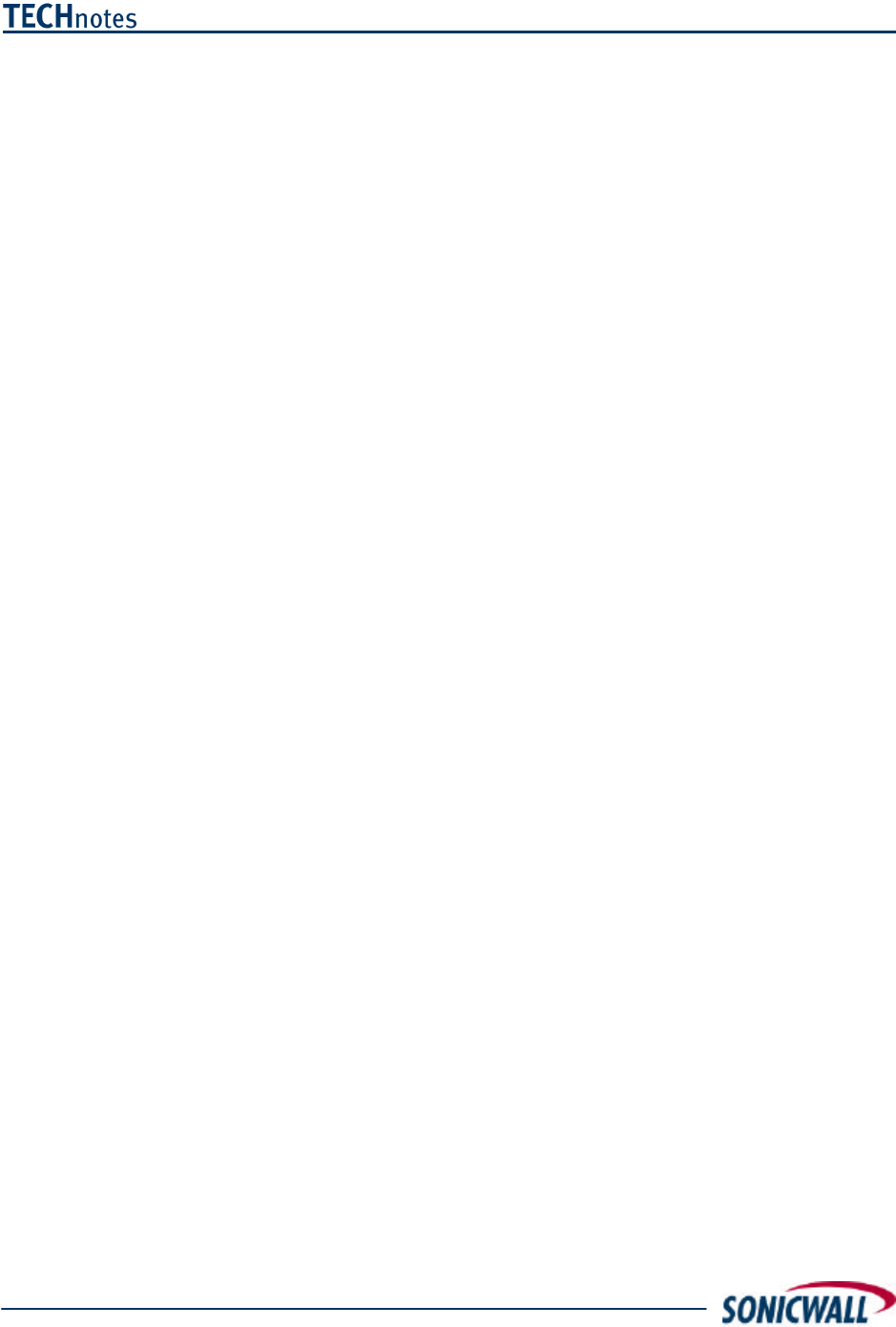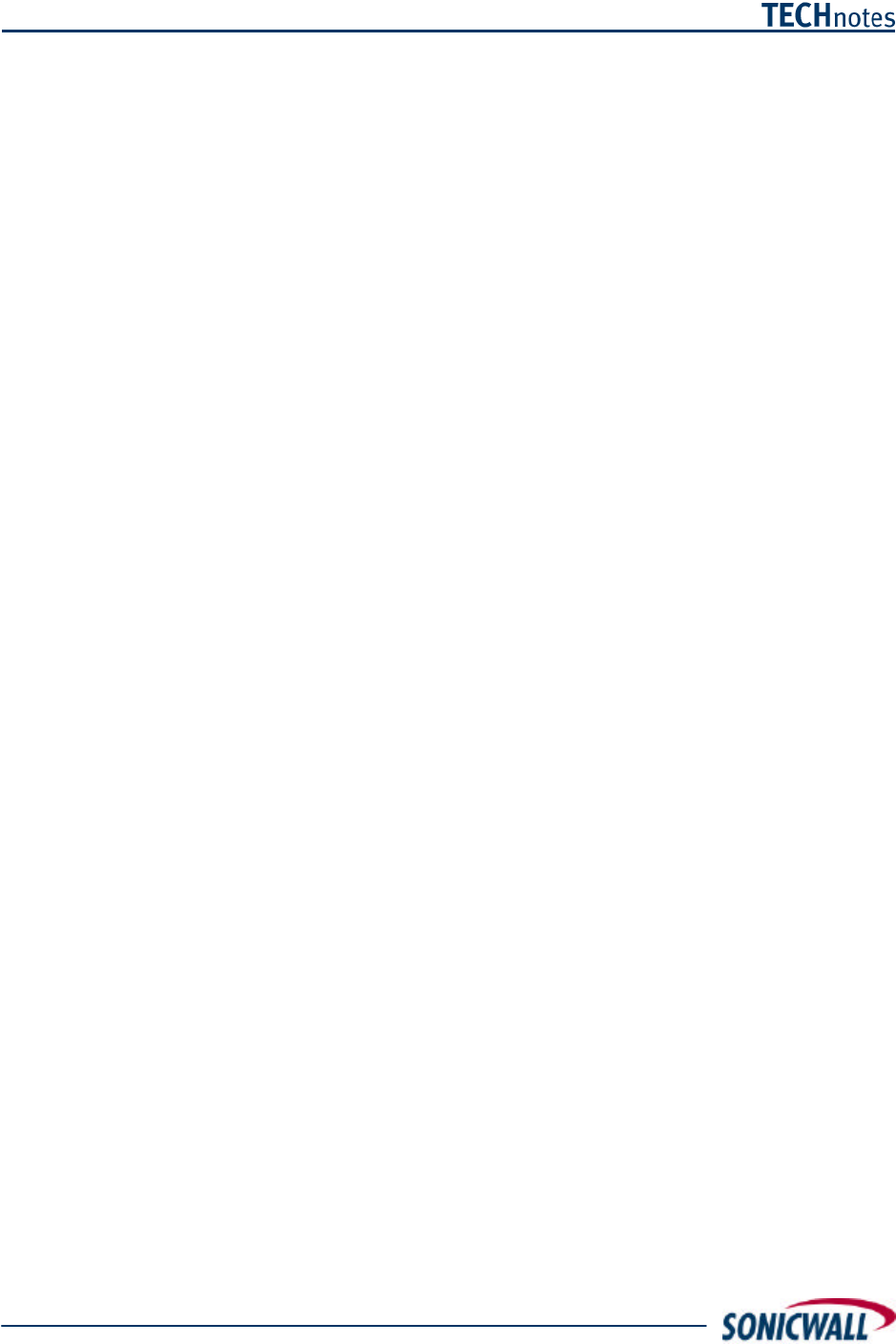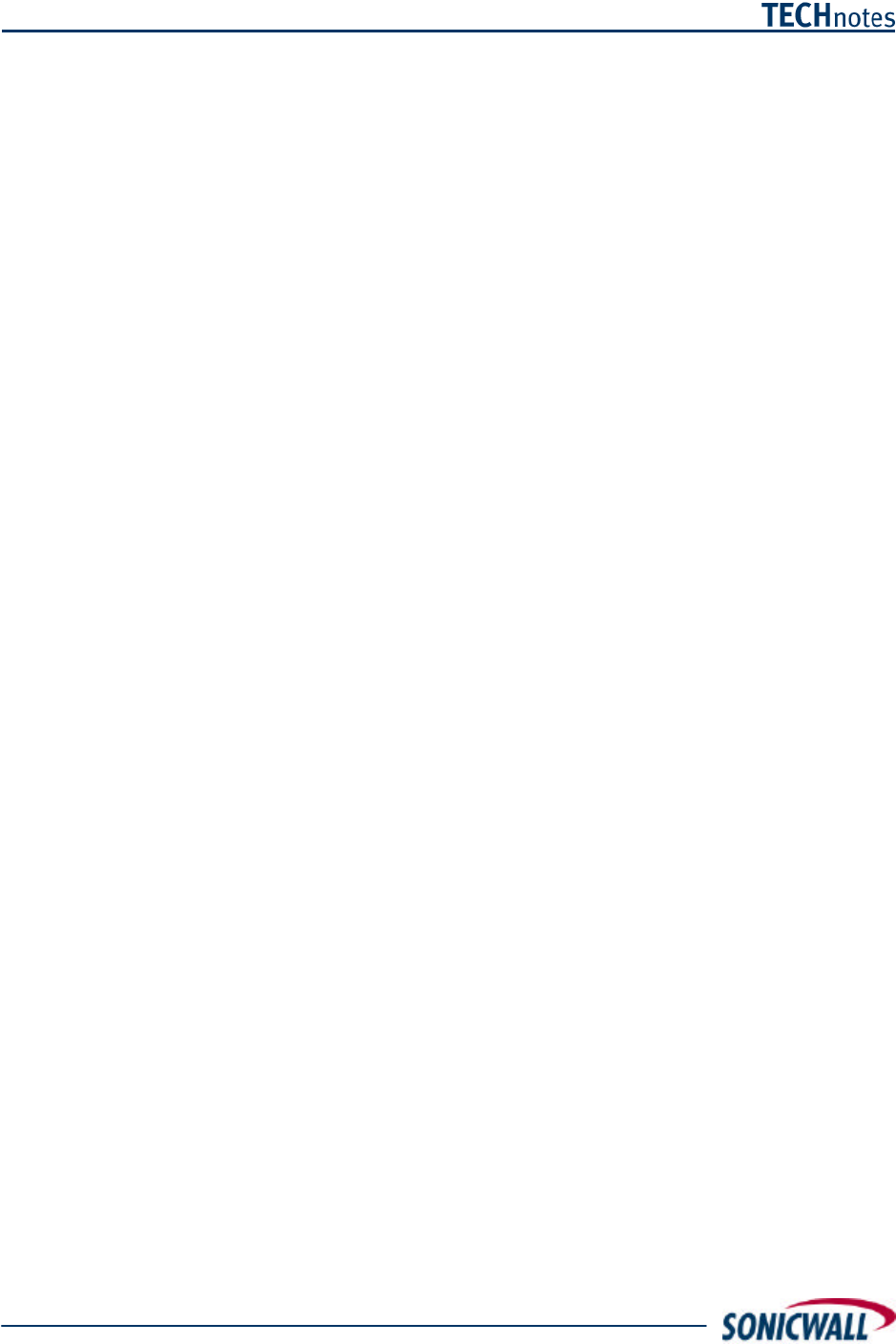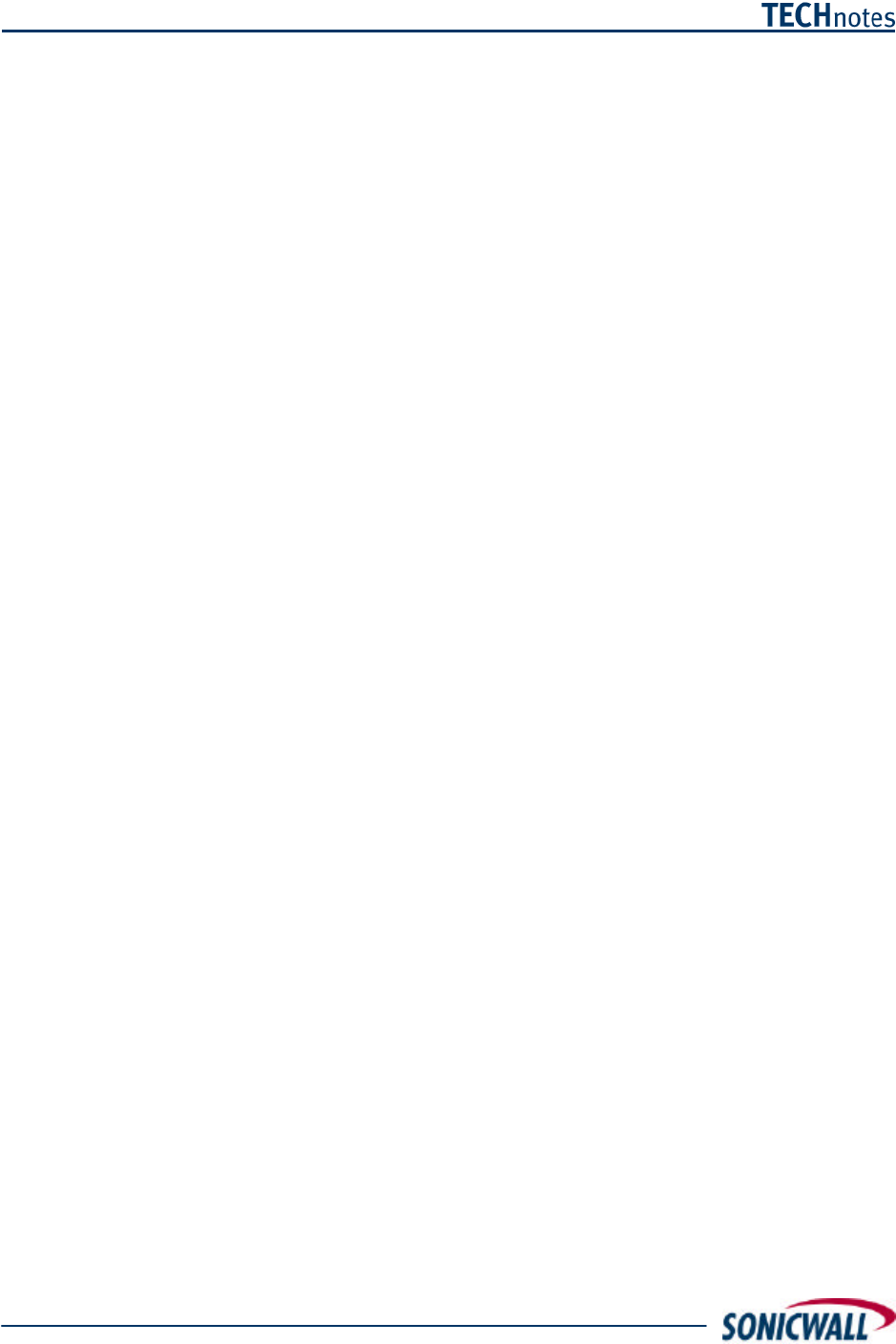Sonicwall 027 802.11b VPN Access point User Manual ricks wireless Release notes
Sonicwall, Inc. 802.11b VPN Access point ricks wireless Release notes
user3

Page 1 of 4
© 2003 SonicWALL, Inc. SonicWALL is a registered trademark of SonicWALL, Inc. Other product and company names mentioned herein may be trademarks and/or registered
trademarks of their respective companies. P/N 232-000373-00
Rev A 04/03
Release Notes for the SOHO TZW Internet Security Appliance
Prepared by SonicWALL, Inc.
04/25/03
SonicOS 1.0 is now available only on the SOHO TZW Internet Security appliance. This release
note provides technical information on the initial release of this product.
• Some firmware updates include updates for the wireless radio card. This information is
provided when the firmware update is released. Firmware updates that include updates
for the Wireless radio card can cause the Test, WLAN, WiFiSec, and Wireless LEDs to
remain lit while the firmware is uploading to the appliance. Do not power the unit off
during the update as this permanently damages your wireless radio card. After the
firmware upload is complete, the SOHO TZW automatically restarts and completes the
firmware update.
• If you begin a management session using the WLAN interface and interrupt the session
by opening another management session on the LAN, you can interrupt active WLAN to
LAN sessions at the TCP layer.
• If you experience multiple failures while attempting to establish a PPPoE connection, it
may be necessary to reboot the SOHO TZW to restore PPPoE functionality.
• Wireless Guests and Users are not unique accounts. If the same user name and
password is created for a wireless guest and a user, the Wireless Guest account is
referenced.
• Changing the HTTP management port on a SOHO TZW providing Wireless Guest
Services requires a reboot to ensure that wireless guest Web browsers are redirected to
the correct URL (specifying the new port) for authentication.
• To create simultaneous Global VPN Client connections through the SOHO TZW to a
remote point and the WLAN, with or without WiFiSec enforcement, you must first create
the connection through the SOHO TZW to the remote termination point on the Internet,
and then to the WLAN port.
• Attempting to create a VPN policy that enables Perfect Forward Secrecy and Forward
Packets to Remote VPNs can cause unfounded proposal-based Phase 2 failures.
• If WiFiSec is enforced on the WLAN, the only broadcast traffic allowed on the WLAN is
NetBIOS, DHCP, and ARP. All other broadcast traffic is dropped by design.
• If the WLAN radio fails, the SOHO TZW watchdog automatically reboots in an attempt to
recover from the failure. If the WLAN LED blinks following the automatic recovery
process, this indicates that the WLAN radio requires a full reset. Please power off the
SOHO TZW; wait a few seconds, then power on to completely reset the WLAN radio.

Release Notes for the SOHO TZW Internet Security Appliance
Page 2 of 4
© 2003 SonicWALL, Inc. SonicWALL is a registered trademark of SonicWALL, Inc. Other product and company names mentioned herein may be trademarks and/or registered
trademarks of their respective companies. P/N 232-000373-00
Rev A 04/03
• XAUTH support for SecureID’s New PIN Mode, Next PIN Mode, and Next Token Mode
is excluded from this release.
• Changing the VPN keying method, for example, IKE to Manual Mode or Manual Mode to
IKE, can inadvertently change the subnet mask of the defined remote destination
network.
• Some wireless cards, notably Netgear and Linksys 54G cards, have demonstrated
compatibility issues when connecting to other manufacturer’s devices. Compatibility
issues are further complicated by the use of WEP, or by increasing the beaconing
interval beyond its default value. It is strongly recommended that you upgrade to the
latest firmware and device drivers available from your wireless client card’s
manufacturer, particularly if you are using Netgear or Linksys 54G equipment.
• By default, the TZW does not handle WLAN based WiFiSec tunneled packets larger
than 1,518 bytes (packets requiring fragmentation). If you are running a large packet
protocol (such as Kerberos or certain UDP applications), you must create a specific
access rule for that protocol, and enable fragmentation on that rule.
• Extremely heavy WiFiSec WLAN traffic loads could result in spurious IPSec Replay
Attack log messages.
• Changing the WAN interface mode, for example, from NAT Enabled to NAT with DHCP
Client while using DHCP services on the TZW can cause the current DHCP lease table
to be flushed.
• Attempting a configuration requiring wireless clients to connect to the TZW with a
WiFiSec connection, and the TZW then attempts to route all traffic through a VPN
connection to a hub termination point can result in failed phase 2 negotiations between
the hub and the TZW.
• Although validation and error-checking is implemented on all management entry fields, it
is strongly recommended that user names, service names, comments, etc. not contain
any non-alphanumeric characters such as apostrophes or backslashes.
• Internet Explorer 5.2.2 running on a Mac exhibits numerous page rendering problems.
When using a Mac for management, an alternative browser (e.g. Safari, iCab, Opera,
Mozilla) is recommended.
Microsoft Windows XP and the SOHO TZW
If you are running Microsoft Windows XP as your computer’s operating system, Windows XP, by
default, manages your wireless PC card settings. If you want to use the Microsoft wireless
management tools rather than your card vendor’s management tools, please note the following
information:
• Your wireless PC card drivers must be compatible with Microsoft’s Wireless Zero
Configuration service.
• You can access the wireless card settings by clicking on the wireless card icon in the
system tray, or by right-clicking on the My Network Places icon on the desktop and
double-clicking on the wireless card icon. When the initial configuration screen appears
it lists all of the wireless networks available. Click Advanced on the lower left side of
this screen.

Release Notes for the SOHO TZW Internet Security Appliance
Page 3 of 4
© 2003 SonicWALL, Inc. SonicWALL is a registered trademark of SonicWALL, Inc. Other product and company names mentioned herein may be trademarks and/or registered
trademarks of their respective companies. P/N 232-000373-00
Rev A 04/03
• Be sure Use Windows to configure my wireless network settings is selected.
• If your TZW SSID name appears in the Available Networks box, select it and then click
Configure. If you do not see it, try clicking Refresh. Please note that if Hide SSID in
Beacon and Block Response to Unspecified SSID are selected on the SOHO TZW,
then you must use the Add button to manually enter the SSID.
WEP Considerations for Windows XP and the SOHO TZW
• If you are using WEP, select Data encryption (WEP enabled) and Network
Authentication (shared mode).
• Clear the The key is provided to me automatically checkbox.
• If using WEP, enter the TZW WEP key in the Network Key and Confirm Network Key
fields.
• If using WEP, Windows XP prior to Service Pack 1 requires you to select the type of key
(alphanumeric, hexadecimal) and the key size (40, 104). Please note that although the
TZW lists different key sizes (64,128) they are actually the same. For this purpose,
40=64 and 104=128. After Service Pack 1, these drop-down boxes are not displayed,
and XP automatically determines the type and size.
• If using WEP, Windows XP prior to Service Pack 1 has a different key index and uses 0-
3 instead of 1-4. The TZW key index uses 1-4. For this purpose, 0=1, 1=2, 2=3, 3=4.
This was resolved in Service Pack 1.
• Click the Association tab and make sure Enable IEEE 802.1x authentication for this
network is not selected.
Additional Regulatory Statement Model APL11-027 and Model APL11-031
This device complies with Part 15 of the FCC Rules. Operation is subject to the following two conditions:
(1) this device may not cause harmful interference, and (2) this device must accept any interference
received, including interference that may cause undesired operation.

Release Notes for the SOHO TZW Internet Security Appliance
Page 4 of 4
© 2003 SonicWALL, Inc. SonicWALL is a registered trademark of SonicWALL, Inc. Other product and company names mentioned herein may be trademarks and/or registered
trademarks of their respective companies. P/N 232-000373-00
Rev A 04/03